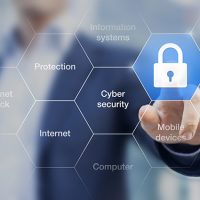Amazon Web Services (AWS), the world’s largest cloud provider, experienced a significant outage on Monday, October 20th that disrupted services for millions of users worldwide. This incident highlighted the inherent risks associated with relying heavily on a single cloud provider for critical infrastructure.
Category Archives: best practices
How to Improve Your Business’ Cybersecurity Posture
Small and medium-sized businesses (SMBs) have become prime targets for cybercriminals, often seen as easier prey with potentially valuable data but fewer security resources. The consequences of a breach can be devastating—ranging from financial losses and operational disruption to irreparable damage to your reputation. The good news? You don’t need a massive budget or a team of experts to significantly improve your security posture. By implementing a few fundamental measures consistently, you can dramatically reduce your risk. Let’s explore the essential steps every SMB should take to protect itself in the digital age.
Regular Cybersecurity and IT Policy Updates: A Strategic Imperative
Cybersecurity and IT policies are no longer static documents. They must be dynamic, adaptable, and responsive to new threats, compliance requirements, technological advancements, and shifting business needs. For businesses, regular updates to these policies are not just a best practice—they are a necessity.
The Importance of Periodic Cybersecurity Assessments
Cybersecurity is a critical aspect of modern business operations, with cyber threats evolving rapidly and becoming more sophisticated. Regular cybersecurity assessments are essential to ensure that systems, networks, cloud presence, personnel, and IT policies remain secure and up-to-date. These assessments go beyond the scope of ongoing IT Managed Services Provider (MSP) support and conventional protection measures such as anti-virus software and spam filtering.
The Unseen Threat: Why Securing Networked Devices is Critical
In today’s interconnected world, networked devices such as printers, scanners, routers, switches, cameras, phones, and the Internet of Things (IoT) have become an integral part of our daily lives. They offer convenience, efficiency, and advanced features that make our lives easier. However, these devices often go unnoticed when it comes to security, leaving them vulnerable to hackers who can use them as a backdoor into more sensitive systems.





